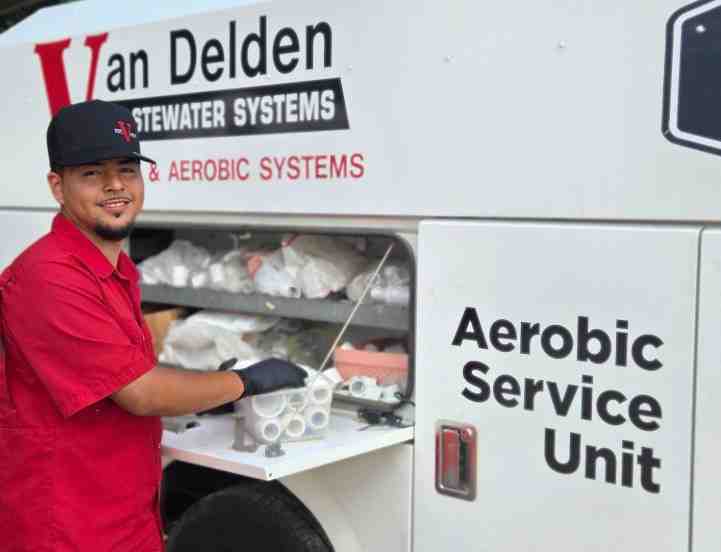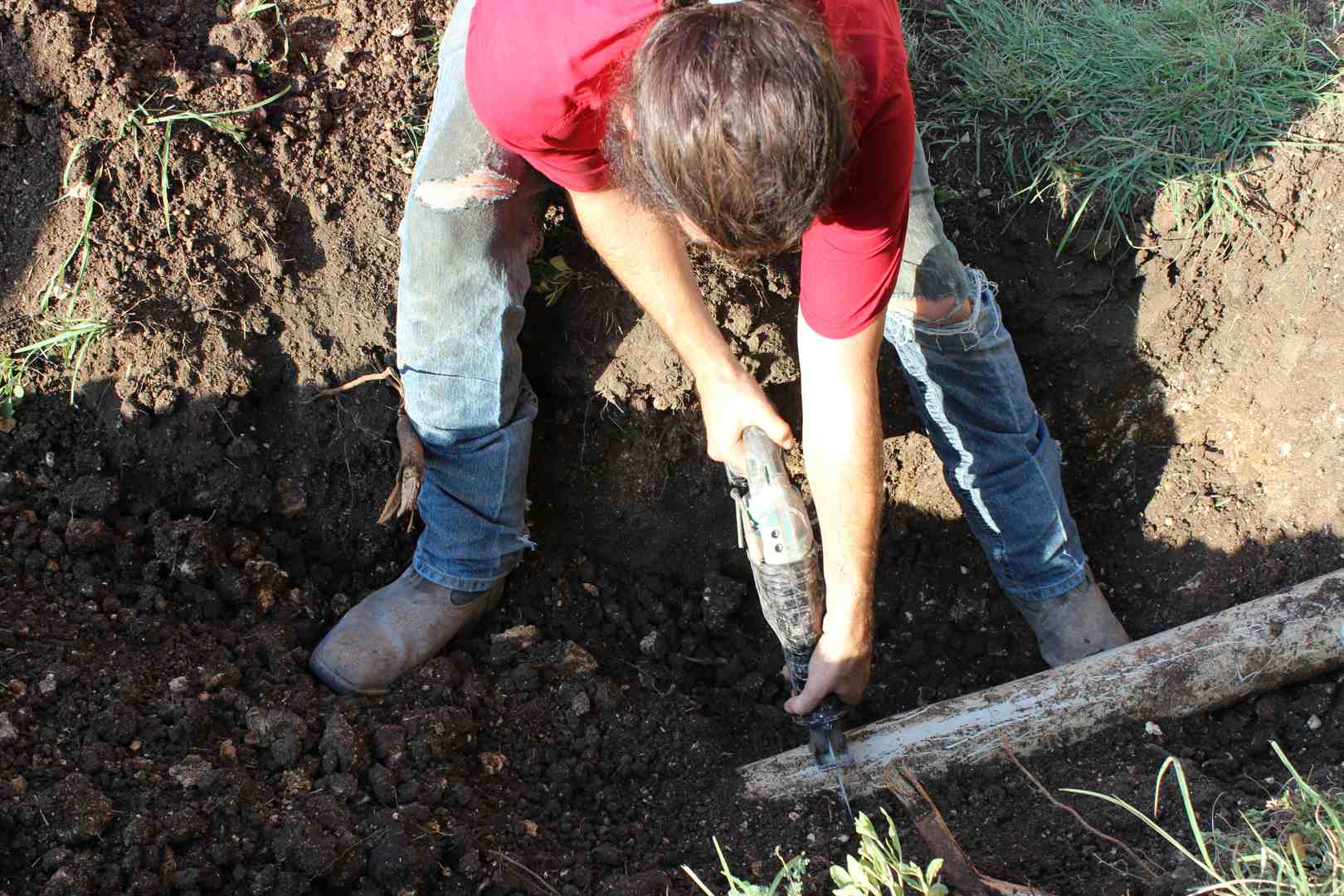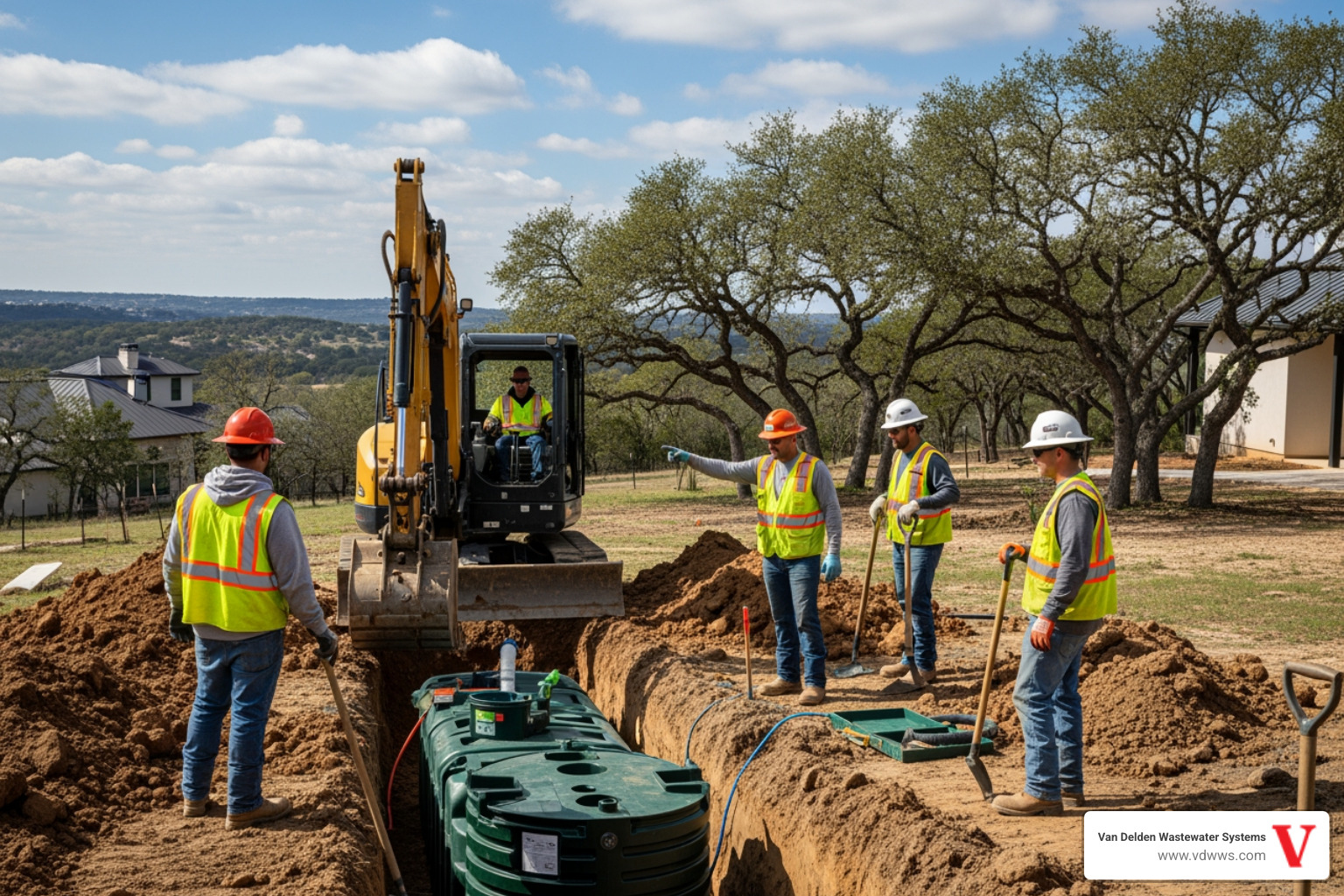When your septic system seems to be working fine, it’s easy to overlook what's happening underground in the drainfield. But over time, issues like uneven water distribution can quietly build up. This can lead to wastewater pooling in some areas while other parts of the drainfield remain dry. If it isn’t caught early, uneven drainfield distribution can begin to affect your home's plumbing, yard, or even cause damage to your septic components.
Homeowners in San Antonio who notice soggy patches in the yard, unpleasant smells near their drainfield, or toilets and sinks that aren't draining well might be dealing with this issue. Living with the uncertainty of what’s going wrong and where can be frustrating. Understanding what causes uneven distribution and what to do about it can help you avoid bigger problems later on.
Understanding Uneven Drainfield Distribution
The drainfield is the part of your septic system where treated wastewater filters through the soil. For the system to work its best, that water needs to be evenly spread out. When it’s not, areas of the drainfield get overloaded while others stay too dry. This imbalance doesn’t just stop things from running efficiently—it can also cause bigger structural and environmental issues.
Here are a few signs that your drainfield might be distributing waste unevenly:
- Patches of lush or overly green grass in one area
- Pooling or standing water on the surface
- Strong sewage odors near parts of the drainfield
- Sluggish drains or frequent backups inside the home
- Muddy soil even during dry weather
Uneven distribution can happen for a few different reasons. In some cases, the system was poorly designed to begin with and doesn’t balance flow effectively across all areas of the drainfield. In other cases, waste might clog one portion of the drainfield pipe, forcing wastewater to redirect into other areas. Even natural factors like soil settling or damage from tree roots can throw off the drainfield's balance. One family we worked with in San Antonio started noticing that their backyard always had a wet spot no matter the season. It turned out that one of the lateral lines was partially blocked, causing all the liquid to spill into a single section.
If any of these issues sound familiar, it's time to take the next step before it gets worse. Even though the system is underground and out of sight, small signs often point to larger problems that require a closer look. Continuing to ignore them won't make them go away—it often makes the situation harder and more expensive to fix down the line.
Potential Consequences of Uneven Distribution
It might seem like minor drainage problems aren’t a big deal, especially if there’s no odor or backup yet, but ignoring them can lead to serious consequences for both your home and property. When one section of the soil receives more wastewater than it can handle, the system starts to break down.
Here’s what can happen when uneven drainfield distribution goes unchecked:
- Health risks: If untreated or partially treated wastewater rises to the surface or enters nearby areas, it can expose your family and pets to contamination. Children playing outside might come into contact with unsafe water.
- Environmental damage: Oversaturated parts of the drainfield can create runoff that reaches nearby drainage systems or natural areas, spreading bacteria and harming plant life and water sources. This is especially concerning in areas of San Antonio where soil is more compact.
- Damage to property: Soggy, soft ground can create sinkholes or damage landscaping. In extreme cases, it can lead to soil erosion or risk weakening the ground around buildings, pavement, or fencing.
- Strain on septic system: The imbalance puts extra pressure on the entire septic setup. When wastewater can’t spread out evenly, it cycles back into the tank faster, reducing its time to settle. That makes pumping more frequent and can shorten the life of the tank and other parts of the system.
Repairing or replacing a failed drainfield is one of the more expensive parts of septic maintenance. That’s why checking for uneven distribution and taking care of issues early on can save time, money, and stress in the long run. Catching those early signs and getting help from experienced professionals can stop things from spiraling into bigger repairs.
Effective Solutions for Uneven Drainfield Distribution
When uneven drainfield distribution causes wastewater to collect in one area, routine drainfield cleaning in San Antonio can make a big difference. Over time, sludge buildup or blockages in the lateral lines can change how effluent moves across the field. Cleaning those lines and checking for clogs helps make sure wastewater spreads evenly, not just to one saturated spot.
A straightforward fix for many uneven distribution problems is replacing or adjusting the distribution box. This component controls how wastewater flows to each line. If the box becomes misaligned or clogs on one side, it can cause a major imbalance in the way effluent is released into the soil. Fixing or replacing the box may allow for smoother distribution.
For homeowners seeing recurring issues like soggy grass or slow toilets, it might be worth checking if the current system itself is working for their actual usage. Some systems were installed years ago with older layouts that didn’t consider future water load. Upgrading to a newer design, with more efficient flow control, may improve system performance—especially for growing families or households with increased water use.
Here are a few common solutions our technicians use to help homeowners in San Antonio restore even drainfield flow:
- Perform full drainfield cleaning to remove buildup or blockages
- Replace or level the distribution box to allow balanced flow
- Repair or replace damaged lateral lines
- Adjust the system layout to match household usage patterns
- Re-check slope or saturation issues caused by soil movement
Every situation is different, so addressing uneven drainfield issues usually involves more than one solution. Spotting the root cause early and making targeted adjustments can extend the life of the drainfield and reduce the risk of bigger failures.
Why Hire Professionals to Troubleshoot Drainfield Issues
Dealing with drainfield problems involves more than digging around until something looks right. Wastewater systems depend on many moving parts working together. If one area gets out of balance, the rest of the system can start to break down quickly. That’s why getting help from our professionals makes a big difference. We don’t do guesswork—we follow proven steps to identify the issue, fix it, and make sure it won’t return.
A homeowner might notice surface water near a septic area or slower drains inside, but without specialized tools and experience, it's nearly impossible to tell where the root of the issue lies. Uneven distribution can stem from deep line clogs, damaged distribution components, or even unseen issues with soil compaction — problems that usually go far beyond what’s visible at the surface.
Our technicians approach every service visit with careful checks, efficient tools, and years of firsthand experience working with drainfield systems in San Antonio. They don’t just fix symptoms. They look at the entire setup, from the septic tank to the last stretch of the drainfield, to figure out what’s causing the imbalance and fix it at the source.
Calling our team can also help you avoid more costly repairs down the line. What starts as a minor imbalance can often be corrected quickly if it’s caught early. Holding off too long, though, often leads to more damaged pipes, deeper system blockages, or even total failure of the drainfield. Having it checked and maintained gives you peace of mind that things are running the way they should.
Long-Term Maintenance and Drainfield Cleaning in San Antonio
Once flow issues are resolved, keeping everything balanced long-term comes down to regular checks and consistent cleaning. Septic systems aren't a set-it-and-forget-it kind of setup, especially when it comes to drainfields. Waiting until there’s standing water in the yard or odors leaking out is often too late.
Routine drainfield cleaning in San Antonio should be part of your septic maintenance plan. This means removing solids and debris from pipes before they can cause misdirected flow. It’s also key to schedule regular septic tank pumping. When tanks get too full, solids can overflow into the lines and create blockages that lead to uneven distribution.
Long-term care can also include:
- Checking the distribution box annually to make sure it’s still level
- Watching water usage during heavy rain periods to reduce overload
- Avoiding parking or heavy equipment near the drainfield
- Keeping detailed maintenance records, including cleaning schedules and service visits
Homeowners who follow these steps help their systems run better for longer. Even well-designed drainfields need occasional tuning to perform properly year after year.
Keep Your Drainfield in Optimal Condition with Our Experts
Uneven drainfield distribution starts small but can end in major septic problems if ignored. Backups, smells, muddy patches, and yard damage are more than just annoyances—they are signs telling you something's off deep underground. Solving these issues quickly relies on regular cleaning, smart system checks, and sometimes design updates that match real-world use.
By understanding what causes these problems, recognizing early red flags, and acting fast, homeowners in San Antonio can maintain a safer, cleaner, and better-working septic setup. Having experienced professionals handle the job gives you the confidence that your drainfield is in good shape—and stays that way.
To ensure both your septic tank and drainfield operate smoothly, Van Delden Wastewater Systems suggests regular maintenance as a smart way to prevent costly repairs in the future. When your system shows signs of imbalance, troubleshooting problems early with routine checks can save you time and hassle. Consider investing in timely drainfield cleaning in San Antonio to keep the wastewater flowing evenly and to ease any stress on your septic tank. For a quick estimate or to book a service visit, please contact us today.
Customer Reviews
Peter was personable, professional and thorough. Highly recommend Van Delden. You might be able to find a cheaper company but not better!
On time. 100% professional, knowledgeable, and courteous. Very helpful and straightforward. That is the bar all businesses should strive for.
It has been a pleasure working with your company. Not only did y’all communicate very well but your workers were always polite! Thank you!
“I thank Van Delden for such prompt service. Honest people are hard to come by these days. I will certainly recommend Van Delden to anyone! Jesse is an upstanding young man and very nice to talk to. I thank everyone at Van Delden for taking such good care of me.”
This is just a note to thank you for explaining the problem with my system. You didn’t have to be so kind and I appreciate your good business ethics and time spent. In the future you will have mine in return!






